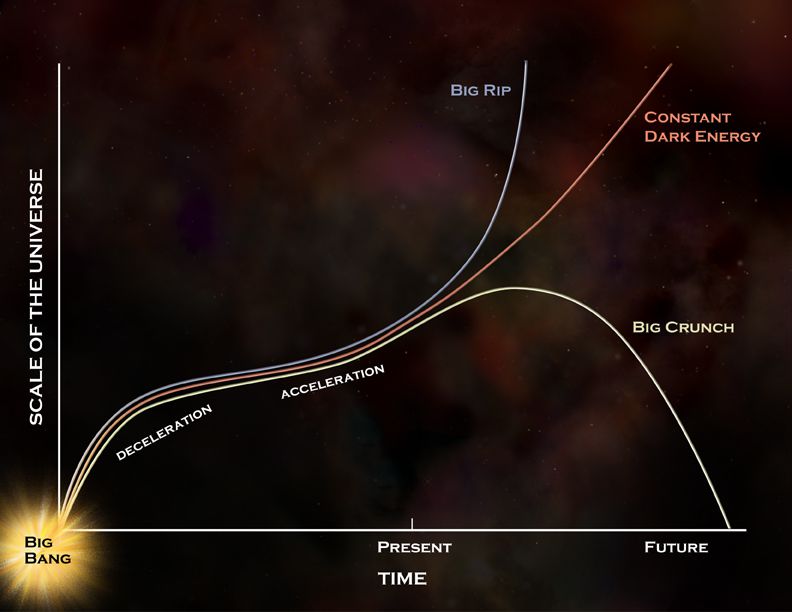-
 Albuginea
Albuginea
-
 GMO
GMO
-
 Phytoplankton
Phytoplankton
-
 Eutrophic
Eutrophic
-
 Fascias
Fascias
-
 NFC
NFC
-
 UMTS
UMTS
-
 Porphyrin
Porphyrin
-
 Clitoris
Clitoris
-
 X-rays
X-rays
-
 Prostatectomy
Prostatectomy
-
 Pit saw
Pit saw
-
 Internet Storm Center
Internet Storm Center
-
 Toxicology
Toxicology
-
 UTC
UTC
-
 Achondrite
Achondrite
-
 Sonoluminescence
Sonoluminescence
-
 Internal ear
Internal ear
-
 Noise
Noise
-
 Clavicle
Clavicle
-
 Computer virus
Computer virus
-
 Hydraulic fracture
Hydraulic fracture
-
 Tungstate
Tungstate
-
 Anti-oxidant
Anti-oxidant
-
 Anxiolytic
Anxiolytic
-
 CD-RW
CD-RW
-
 Epigastric
Epigastric
-
 Flora Fauna Habitat Directive
Flora Fauna Habitat Directive
-
 Carabidae
Carabidae
-
 Progressive Scan
Progressive Scan
Big Rip
The Big Rip is a cosmological model based on a particular form ofdark energy. It is called phantom energy.
The principle of the Big Rip
In this model it is assumed that the cosmological constant can in fact vary over time, so that its density will start to increase, despite the fact that the universe is expanding, to reach an infinite value in a finite time. The cosmos will then end its existence in a gravitational singularity in which all structures, from galaxy clusters to atoms, will be destroyed. In a more classical model of dark energy, the expansion remains at a scale higher than that the galaxy clusters and cannot materialise at planet and atom scale, unlike phantom energy. This model was first proposed in 1999 by Robert R. Caldwell, the name Big Rip being coined by himself and his collaborators Marc Kamionkowski and Nevin N. Weinberg in 2003.
The supposed chronology of the Big Rip
The following chronology can be established for the Big Rip:
- a few hundred million years before the Big Rip: dislocation of the superclusters;
- a few tens of millions of years before the Big Rip: dislocation of the Milky Way;
- a few years before the Big Rip: Jupiter, Saturn, Uranus and Neptune are torn away from the solar system;
- a few months before the Big Rip: the earth is torn from its orbit;
- a few dozen minutes minutes before the Big Rip: dislocation of the Earth;
- a few minutes before the Big Rip: dislocation of the Sun;
- 10-17 seconds before the Big Rip: dislocation of atoms.
 Depending on whether dark energy is variable in nature, the universe will end in a Big Crunch or continue to expand eternally. This diagram shows the deceleration followed by the accelerated expansion of the universe depending on time. Three possible scenarios for the end of the universe then appear. © NASA/CXC/M. Weiss
Depending on whether dark energy is variable in nature, the universe will end in a Big Crunch or continue to expand eternally. This diagram shows the deceleration followed by the accelerated expansion of the universe depending on time. Three possible scenarios for the end of the universe then appear. © NASA/CXC/M. Weiss
Latest
Fill out my online form.



